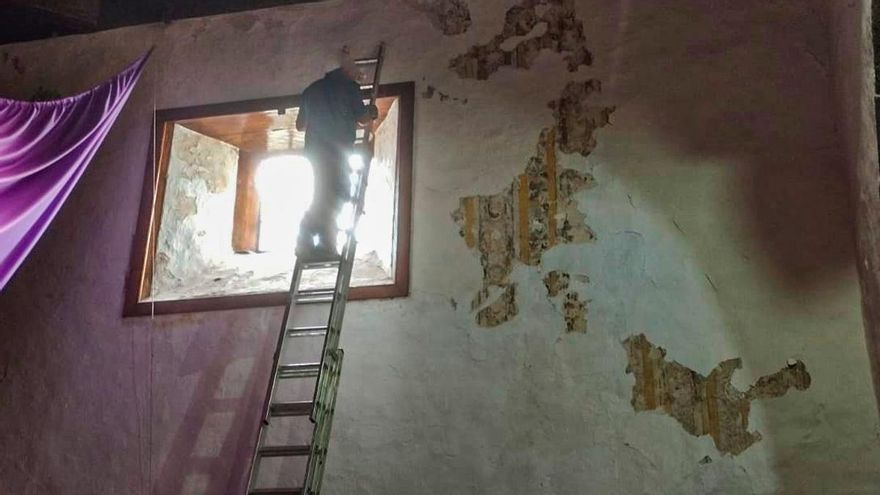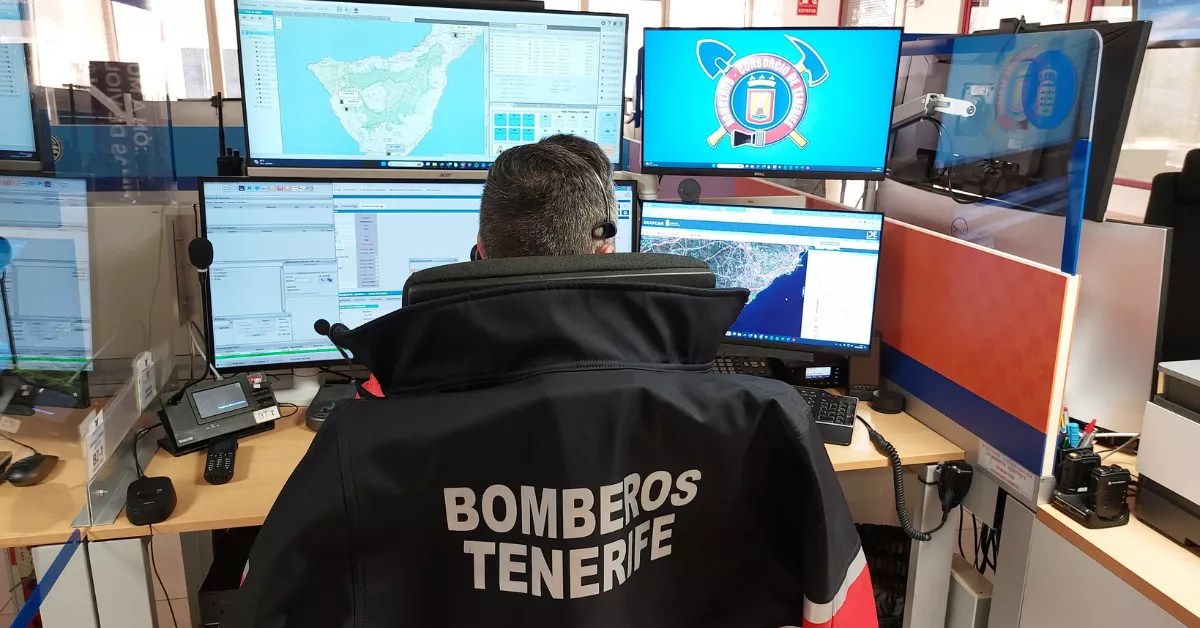
Similar to the famous fresco of the Ecce Homo in a village in Zaragoza but with a twist in Tenerife, and notably, in this case, it wasn’t a parishioner, but the parish priest himself who damaged the artwork.
The residents of the municipality of El Tanque (2,600 inhabitants), in the north of Tenerife, have rebelled against the parish priest of San Antonio de Padua, Héctor Lunar Guevara, for causing damage to protected frescoes in the church’s chancel, designated a Cultural Interest Site in 2011.
The events took place four days ago. This was reported by the Brotherhood of Our Lady of Buen Viaje of El Tanque, in a complaint shared on social media: “The final straw has been reached. Today (this past Friday, 8th of March) a crime against the historical heritage of our municipality has been committed. The parish priest Héctor Luna Guevara has decided, following his own rules, to scrape and paint the sides of the chancel of the mother parish of San Antonio de Padua, which were protected with special paint and awaiting restoration.”
The statement from the Brotherhood adds: “He did this without knowledge of the artistic richness behind the white paint, without permission from Heritage, which is mandatory, and neither did the City Council have knowledge of this.”
This Brotherhood, along with the Neighbourhood Association Our Lady of Buen Viaje and other social groups in El Tanque, have requested that the Bishopric of Tenerife remove the parish priest from this parish and have reported the incidents to the City Council to take appropriate action.
In contrast to the case 12 years ago involving Cecilia Giménez from the village of Borja, who attempted to fix the Ecce Homo fresco and ended up destroying it, in Tenerife, the priest instructed a non-specialist company to remove a protective layer of plastic paint from the frescoes of San Antonio de Padua, placed precisely to safeguard the paintings.
Not only did he order the removal of this protective layer, which was meant to remain until the frescoes were restored, but he also told the workers to apply a layer of traditional white paint on top.
The Mayor of El Tanque, Esther Morales, confirms that this new layer of traditional paint has caused damage to the frescoes, the severity of which will now be assessed. It is on this Monday that the Mayor welcomes heritage specialists from the Tenerife Council and the Government of the Canary Islands to determine if the frescoes can be salvaged or if they are lost forever.
Government of Canary Islands and Tenerife Council experts visit El Tanque to assess the damages to the frescoes
[–>
“The priest did not inform about these works. This parish is a private asset, but the Council decided to protect it by designating it a Cultural Interest Site due to its high cultural and historical value. These 18th-century frescoes also hold immense value.” This is outlined by Esther Morales, who recalls that one of the frescoes had been restored in previous works in this parish, but not others located in the chancel, i.e., the area of the main altar up to the base of the steps.
The Brotherhood of Our Lady of Buen Viaje claims that the priest “also did not bother to properly protect the wooden floor, nor shield the images, some of which are older than the parish itself, dating back to the 18th century.”
The priest failed to notify of the works that have impacted the 18th-century frescoes
[–>
According to the Brotherhood and the Neighbourhood Association, this behaviour of the priest demonstrates “his lack of respect and absolute ignorance towards our history, our culture, and our heritage, done ruthlessly.”
The outrage of the residents of El Tanque towards this priest is longstanding, even before he ordered these shoddy works without considering the potential damage. This is highlighted by the Brotherhood. “We have been enduring disrespect from this man for almost two years, not only towards the members of this Brotherhood but also to other faithful members, towards our customs, our culture… We, as the Brotherhood and as members of the parish group, have spent our entire lives caring for and preserving the church, preparing it for each liturgical event, ensuring it is clean because, after all, it is our home, and we have realized that this man wants to push us out of the parish. We do not deserve this treatment.”
The residents of El Tanque are outraged by the priest: accusing him of disrespect
[–>
“We have never wanted to speak publicly because we hoped that the bishop would pay attention to the requests we have made by letter or through other people, but it is time for everyone to know what Don Hector is really like,” explains the statement circulated on social media, which concludes : “Since he arrived in El Tanque, he has done nothing but what he pleases. He does as he pleases and defends himself by saying because I am the parish priest. A person who should set an example of faith, respect for others, humility… is quite the opposite. We are tired.”.
The Tenerife Bishopric is fully aware of the indignation of the El Tanque residents. They have also sent experts to determine the damages suffered by the frescoes. The Neighborhood Association Nuestra Señora del Buen Viaje hopes that this parish priest will be removed and take responsibility for the damages.
The tests to be carried out on the frescoes by the technicians will determine if these paintings, with three centuries of history, can be saved, unprotected by the parish priest’s order and covered over with regular white paint.
The Brotherhood of Nuestra Señora del Buen Viaje explains in another link on their Facebook page the importance of the San Antonio de Padua parish, located in the historic centre of El Tanque. They emphasize the following: “Before the volcanic eruption of Trevejo in 1706, the area that we now know as the historic centre had a small hermitage dedicated to San Antonio de Padua (16th century). This hermitage was destroyed by the volcano, so the few residents who had settled in the area built the current parish with their own hands and the few resources they had, which was opened for worship in 1729 (18th century).”
“Between 1999 and 2007, the restoration of the parish took place, during which some paintings on the walls of the presbytery were discovered. Only a strip above the sacristy door could be restored, as the full restoration requires a large financial investment and heritage consent, as the parish is a Cultural Interest Site,” concludes the Brotherhood.
















